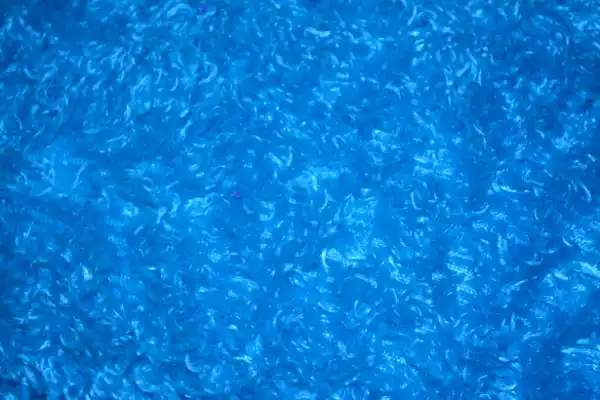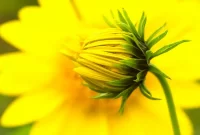Introduction
Blue has been a continuous companion to humans throughout history due to its large and varied spectrum. Blue is associated with emotions, symbolism, and scientific wonders, from the deep azure of the ocean to the transient hues of the sky. In this investigation, we uncover 15 vital facts about the colour blue, diving into its creativity, cultural importance, and the fascinating science underlying its manifestation.
1. The Physics of Blue
Like all colours, blue results from light at its heart. Blue light has shorter wavelengths than red or yellow light, making it more easily scattered. The sky looks blue during the day because shorter blue wavelengths are diffused more extensively by the Earth’s atmosphere.
2. Blue Pigments in Art
The pursuit of the perfect blue pigment has driven artists for centuries. Lapis lazuli, a semi-precious stone, was ground into powder to create the vivid ultramarine used by Renaissance painters. In the 18th century, chemists synthesized new blue pigments like Prussian blue, liberating artists from the constraints of rare and expensive natural sources.
3. Blue as a Cultural Symbol
In various cultures, blue has carried diverse connotations. Historically associated with royalty due to its rarity and expense, blue evolved into a symbol of democracy in the modern era. Like the American flag, the blue in national flags represents freedom and the pursuit of a better future.
4. The Mystery of YInMn Blue
In 2009, chemist Mas Subramanian accidentally stumbled upon a new shade of blue while experimenting with manganese-based compounds. This serendipitous discovery led to YInMn blue, named after its elemental components: yttrium, indium, and manganese. It has since become a sought-after colour in art and design.
5. Blue in Language
The English language is a treasure trove of expressions featuring the colour blue. From feeling “blue” to describing something as “out of the blue,” our linguistic landscape is coloured with various blue idioms that intertwine with human emotions and experiences.
6. The Blue Lagoon Effect
Turquoise, a shade of blue often associated with tropical waters, has an almost magical allure. The stunning blue lagoons of exotic destinations like Bora Bora and the Maldives captivate travellers, inspiring wanderlust and a desire to experience the soothing embrace of these paradisiacal waters.
7. Blue Morpho Butterflies
The blue morpho butterfly’s wings are an iridescent wonder. Despite the lack of colours, their wings’ minuscule scales reflect and refract light, generating a vivid blue hue that shimmers at different angles. This natural phenomenon demonstrates the animal kingdom’s colour creativity.
8. Blue and Music
Blue is more than simply a visual experience in music. Blues music originated in African-American communities and is steeped in passion and storytelling. The genre’s melancholy melodies and heartfelt lyrics frequently address themes of love, sorrow, and the intricacies of human existence.
9. Blue for Healing
Colour therapy, also known as chromotherapy, proposes that various colours have therapeutic benefits on our mental and physical health. Blue is frequently linked with peace and relaxation, making it a popular option in vital places such as hospitals and wellness centres.
10. Blue Jeans: A Cultural Icon
The ubiquitous blue jeans, initially associated with American workwear, have transcended their humble origins to become a global fashion phenomenon. The durability and versatility of denim, paired with the timeless appeal of indigo blue, have made blue jeans a symbol of rebellion, youth, and enduring style.
11. The Blue Screen of Death: A Digital Nightmare
In the tech world, the “Blue Screen of Death” (BSOD) is an infamous sight that strikes fear into the hearts of computer users. This error screen, displaying white text on a blue background, signifies a critical system error on Windows-based systems, leading to crashes and potential data loss.
12. Blue in Food: Appetizing or Apprehensive?
The presence of blue in food can evoke a range of reactions. While naturally occurring blue foods are rare, modern technology has introduced blue food colouring to create visually striking culinary delights. From blue raspberry candies to blue velvet cakes, this unconventional colour challenges traditional perceptions of edibility.
13. Blue Light and Sleep
In the age of smartphones and computers, exposure to blue light, especially before bedtime, can disrupt our circadian rhythm. The suppression of melatonin production, the hormone responsible for sleep, raises concerns about the potential impact of constant screen time on our sleep quality and overall health.
14. Blue Gemstones
The world of gemstones boasts an array of captivating blues. From the deep oceanic tones of sapphires to the mesmerizing variations of blue topaz, these gemstones have adorned jewellery and inspired myths and legends throughout history. The significance of blue gemstones often extends beyond their aesthetic appeal, carrying cultural and metaphysical meanings.
15. The Future of Blue
As we navigate an era of environmental consciousness, the colour industry faces challenges to reduce its ecological footprint. Innovations in sustainable and eco-friendly blue pigments are emerging, paving the way for a future where the beauty of blue can be enjoyed without compromising the health of our planet.
Conclusion
In the vast canvas of human experience, blue paints a story that spans art, culture, science, and emotion. From the skies above to the ocean’s depths, blue is not merely a hue; it’s a journey through history, a reflection of human creativity, and a canvas upon which we project our dreams and aspirations. As we continue to explore and understand the nuances of this enigmatic colour, our fascination with blue shows no signs of fading, leaving us to marvel at the enduring allure of this timeless shade.



